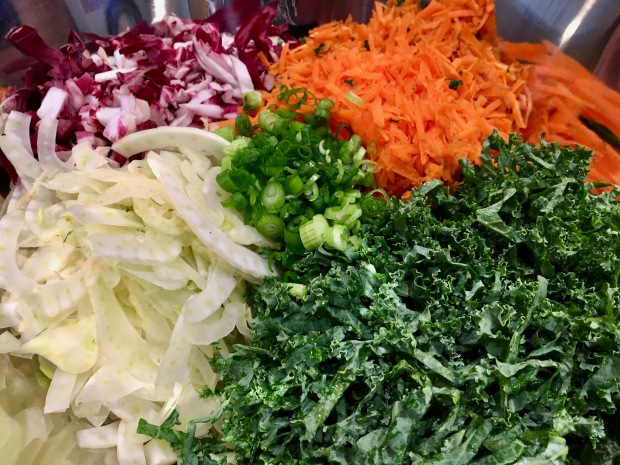
Borscht “Pasta”
Ingredients
- 1 large beet (peeled and spiralized into noodles)
- 2 garlic cloves (minced)
- 3 Tbsps butter or olive oil
- 1/4 cup broth (vegetable chicken)
- 15 cherry tomatoes
- 1 Tbsp fresh dill (chopped, or 1 tsp dried dill)
- salt and pepper (to taste)
- sour cream, for garnish (optional)
Instructions
- Heat the butter or oil in a large pan over medium heat. Add the garlic and sauté until the garlic is fragrant and is starting to brown. Add the tomatoes, and stir, cooking until the tomato skins blister and split. Next, add the beet noodles, stirring to coat the noodles with the butter/oil. Add the broth and cover the pan to allow the noodles to steam for about 5-8 minutes or until they become tender. Uncover and cook, stirring regularly, until the liquid is almost completely gone. Add the dill and stir. Serve with a dollop of sour cream, if desired.
And now for the details…
Beet noodles. No, not beet-infused pasta, but actual noodles made out of beets. You’re probably already familiar with zucchini or carrot noodles by spiralizing the vegetables, but how about spiralizing beets? The inspiration for this dish came while I was grocery shopping. The grocery store had beet noodles already prepped for sale and my first thought was “what the heck would you do with beet noodles?”
Well… my brain wouldn’t let it go and I felt the need to figure out what I would do with beet noodles. The earthy flavour of beets is quite pungent, so just throwing them in with any old dish as a pasta replacement would heavily change the flavour of meal. Besides, that beety flavour is so tasty, was there a way to highlight it and make the beet noodles the star of the dish? And then it came to me: a borscht-inspired “pasta” dish.
In order to minimize the mess at home, since I’d never tried spiralizing beets, I chose to use a golden beet instead of a purple/red beet. I can only imagine what the kitchen would have looked like after trying to do this with the deeply coloured purple/red beet. Dark red stains everywhere, it would heavily resemble the scene of a murder. So let’s avoid that and go with the golden beet, shall we? Same great flavour. Less mess. *cheesy smile and thumbs up*
When choosing a beet, try to pick one that’s a little on the larger side, between the size of a tennis ball and softball. In order to spiralize, we need to peel the beet first. Don’t worry about peeling off the bottom of the beet, that’s going to be anchored into the end of our spiralizer. The mistake I made here was to spiralize the whole beet without cutting the noodles as I went. This resulted in looooooooooong Rapunzel-like strands of beet noodles that were a little challenging to work with. I would suggest giving them a little snip with food scissors every 8″-12″/20-30cm as you spiralize to form reasonable-length noodles.

Next, we start cooking! Heat the butter or oil in a large pan/skillet over medium heat. Add your minced garlic and stir until the garlic becomes fragrant (is there a smell much better than garlic cooking in butter?) and add the tomatoes. Cook the tomatoes, stirring regularly, until the skin on the tomatoes blisters and splits open.

Add the beet noodles into the pan. Stir them well so they become coated with the garlicky butter/oil. I found the easiest way to do this was to use some tongs to pick up the noodles and shift them around the pan. Add the broth to the pan, and cover the pan, allowing the beet noodles to cook and soften. This will take about 5-8 minutes.

Finally, uncover the pan, and sprinkle with the dill, stirring well. If there is still quite a bit of liquid in the pan, keep stirring and cooking until most of the liquid has been absorbed/cooked off. Finally, transfer to a serving dish and serve with sour cream!

Happy eating.


















































